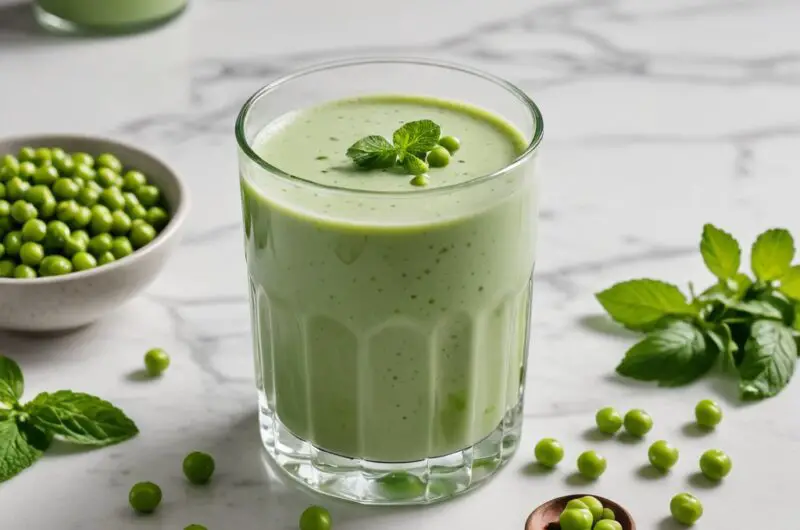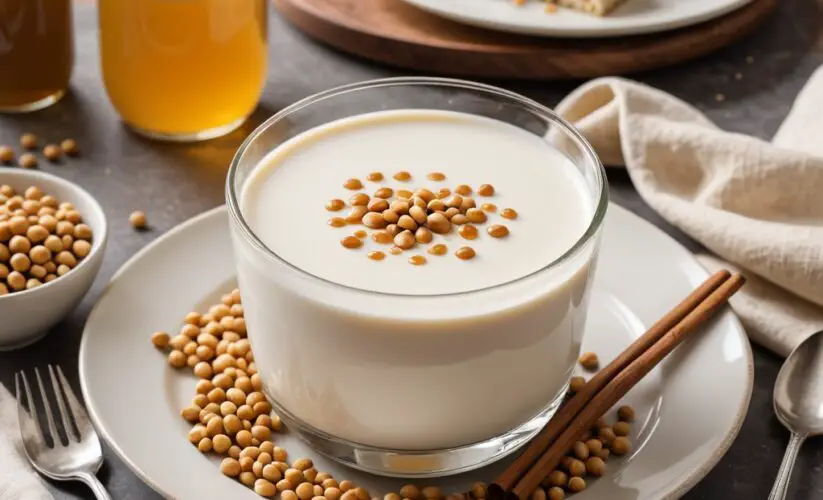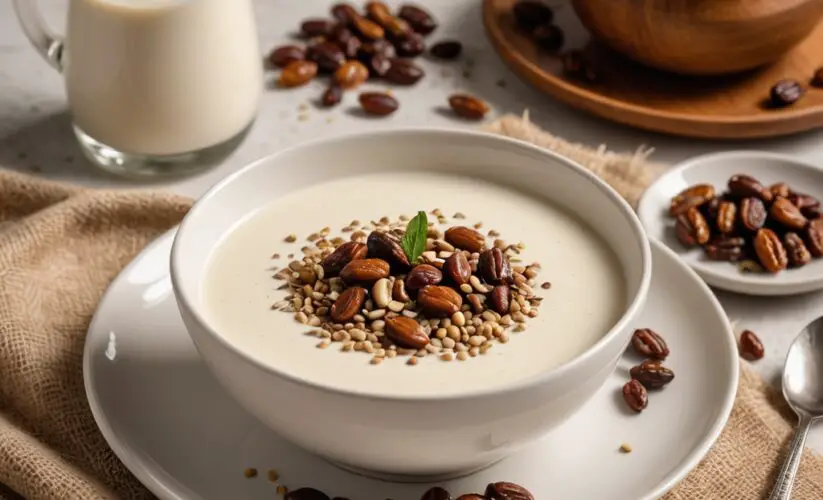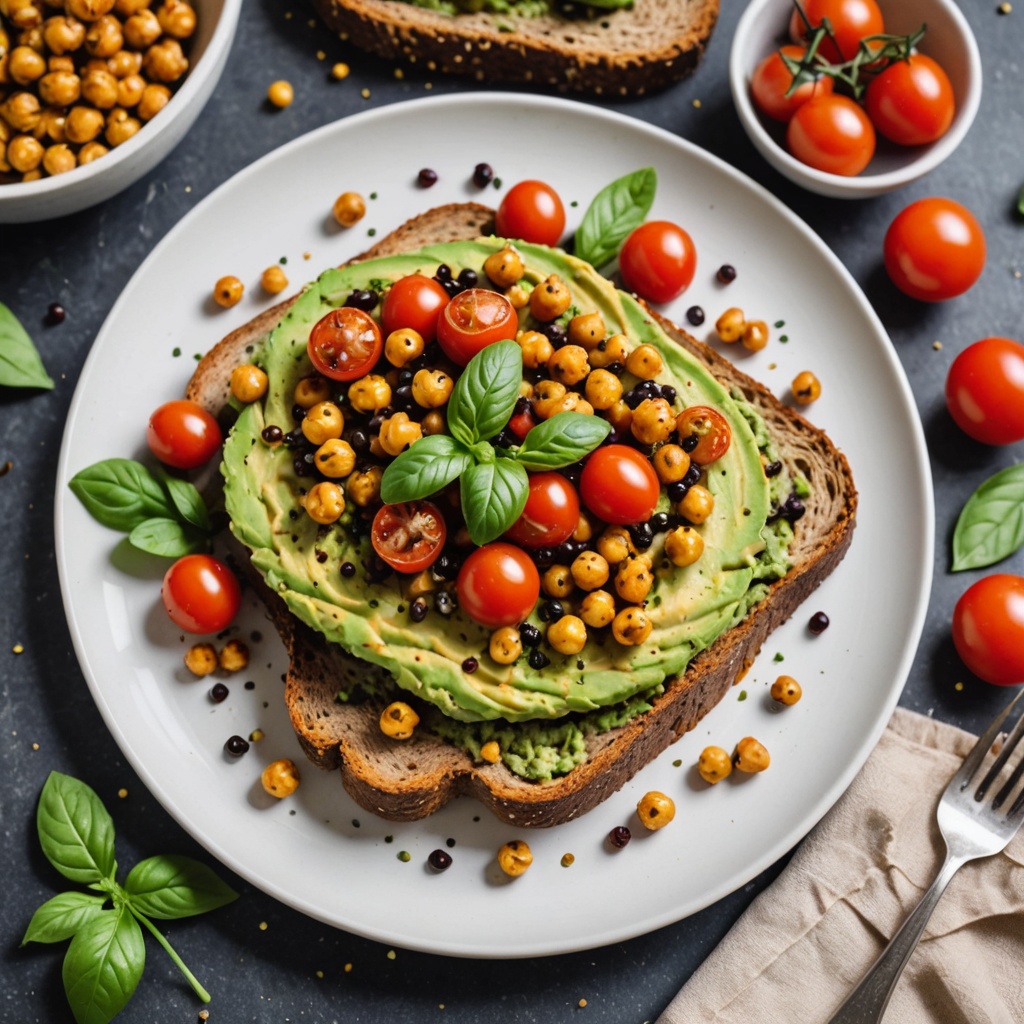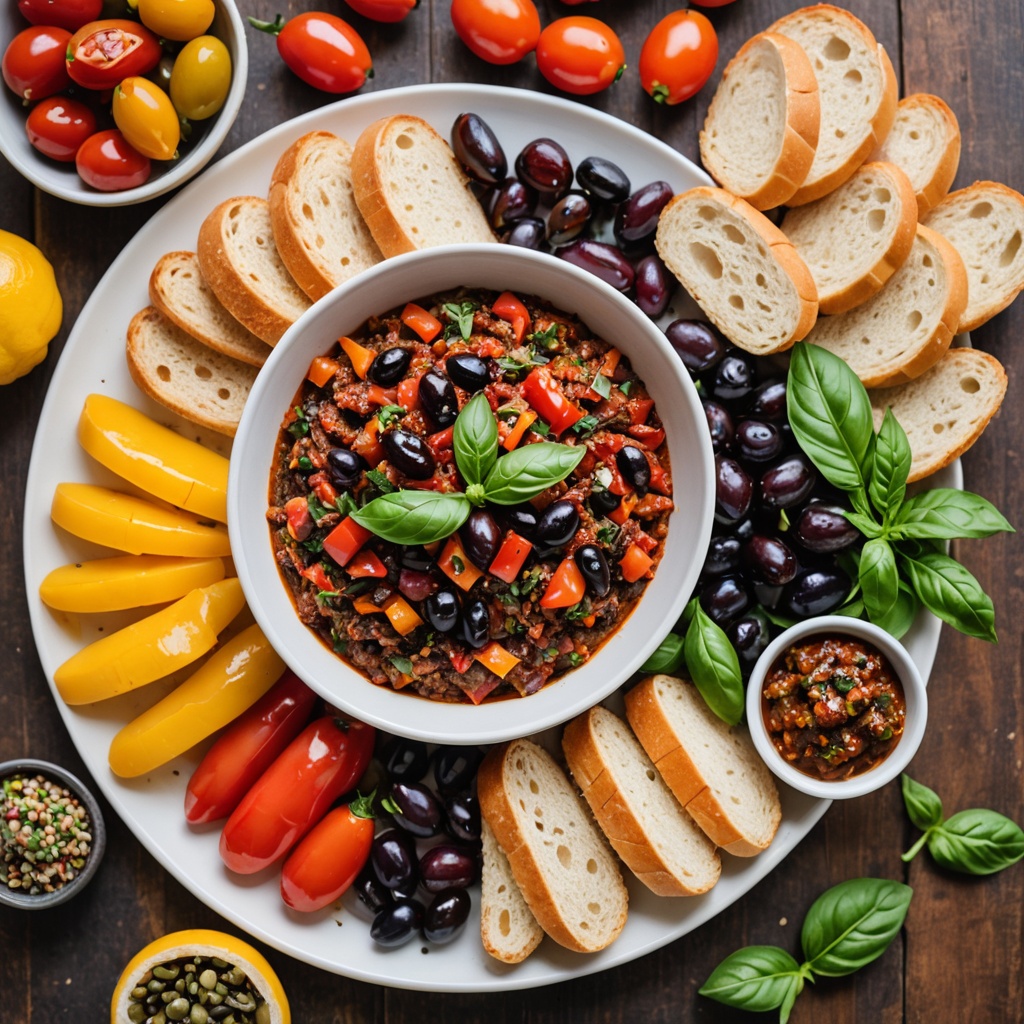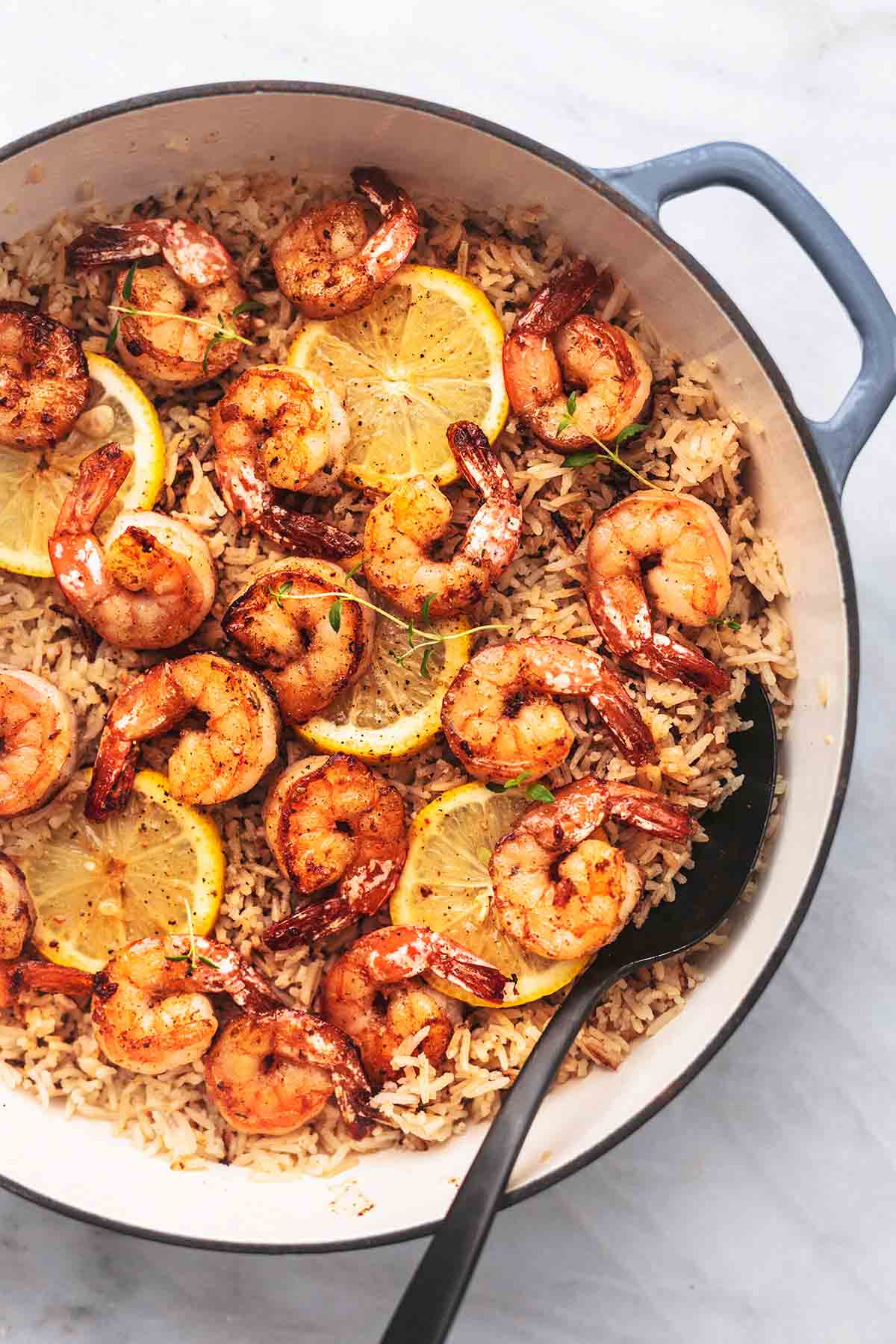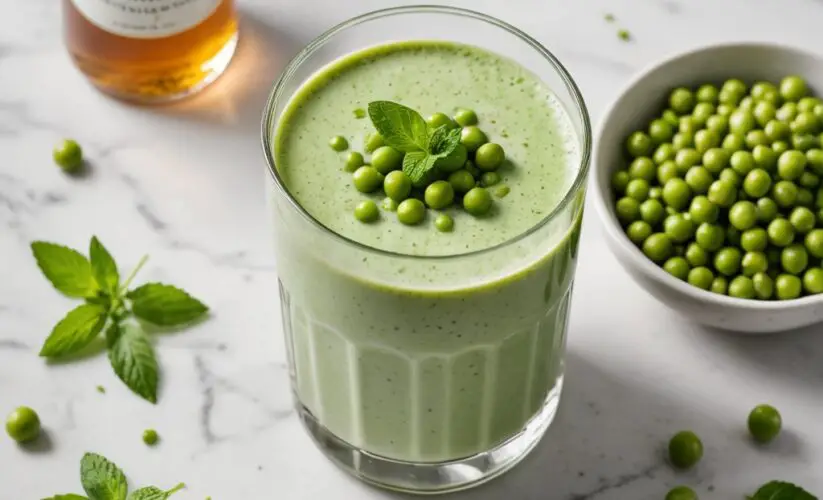
How to Make Pea Milk at Home: Simple and Nutritious Recipe
Unlock the Power of Peas: Homemade Pea Milk Recipe Looking for a creamy, protein-rich alternative to dairy that’s easy to make and eco-friendly? Say hello to homemade pea milk! This nutritious plant-based drink is perfect for those with nut allergies and anyone seeking to diversify their milk options. In this post, I’ll share my simple recipe for creating this delicious, sustainable beverage right in your own kitchen. Get ready to transform humble yellow split peas into a creamy delight that’s both nutritious and versatile. Let’s dive in!.
Nutritional Information
The ingredients and nutrients in this homemade pea milk recipe can indeed benefit skin health, hair health, and the immune system in several ways:
Skin Health:
- Protein: Peas are rich in protein, which is essential for collagen production and skin elasticity. The amino acids in pea protein help repair and regenerate skin cells.
- Antioxidants: Peas contain antioxidants like vitamin C and E, which protect skin from free radical damage and promote a youthful appearance.
- Iron: The iron content in peas supports healthy blood flow, ensuring proper oxygenation of skin cells.
Scientific explanation: Collagen, the main structural protein in skin, requires amino acids for synthesis. Antioxidants neutralize free radicals that can cause premature aging and skin damage.
Hair Health:
- Protein: The protein in peas provides the building blocks for strong, healthy hair.
- Iron: Iron is crucial for hair growth and prevents hair loss by ensuring proper nutrient delivery to hair follicles.
- B-vitamins: Peas contain B-vitamins like folate, which support hair growth and strength.
Scientific explanation: Hair is primarily made of protein (keratin), and adequate protein intake is essential for hair growth and strength. Iron deficiency has been linked to hair loss, as it’s needed for the production of hemoglobin, which carries oxygen to hair follicles.
Immune System:
- Vitamin C: Peas are a good source of vitamin C, which stimulates the production and function of white blood cells.
- Zinc: Peas contain zinc, a mineral that plays a crucial role in immune cell development and communication.
- Antioxidants: The antioxidants in peas help protect immune cells from damage and support overall immune function.
Scientific explanation: Vitamin C is known to enhance the function of phagocytes and T-cells, key components of the immune system. Zinc is involved in numerous aspects of cellular metabolism and is required for immune cell development and function.
Additional benefits:
- The optional maple syrup or honey provides additional antioxidants and antimicrobial properties.
- Vanilla extract contains small amounts of antioxidants and may have anti-inflammatory properties.
- Sea salt provides trace minerals that support various bodily functions, including immune health.
By making this pea milk at home, you’re ensuring a fresh, additive-free beverage that retains more of its natural nutrients compared to processed alternatives, potentially maximizing these health benefits.
Nutritional Information
To provide a detailed nutritional breakdown for this homemade pea milk recipe, I’ll need to make some assumptions and calculations based on standard nutritional data for split peas and the other ingredients. Please note that this is an estimate and may vary slightly depending on specific brands and exact measurements.
Assuming the recipe yields about 4 cups (32 fl oz) of pea milk, and a serving size is 1 cup (8 fl oz):
Nutritional breakdown per 1 cup (8 fl oz) serving:
Macronutrients:
- Protein: 8-9 g
- Carbohydrates: 15-17 g
- Dietary Fiber: 4-5 g
- Sugars: 3-4 g (including added sweetener)
- Fat: 0.5-1 g
- Saturated Fat: 0 g
Micronutrients:
- Vitamin A: 15-20 IU
- Vitamin C: 1-2 mg
- Vitamin E: 0.1-0.2 mg
- Vitamin K: 3-4 μg
- Thiamin (B1): 0.2-0.3 mg
- Riboflavin (B2): 0.1-0.2 mg
- Niacin (B3): 0.5-0.7 mg
- Vitamin B6: 0.1-0.2 mg
- Folate: 50-60 μg
- Calcium: 20-25 mg
- Iron: 1.5-2 mg
- Magnesium: 30-35 mg
- Phosphorus: 100-110 mg
- Potassium: 300-350 mg
- Zinc: 0.8-1 mg
- Copper: 0.2-0.3 mg
- Manganese: 0.3-0.4 mg
- Selenium: 1-2 μg
Additional notes:
- The protein content is relatively high compared to many other plant-based milks, making it a good source of plant protein.
- The milk is naturally low in fat.
- It provides a good amount of dietary fiber, which is not typically found in significant quantities in other milk alternatives.
- The milk is a good source of several B vitamins, particularly folate.
- It contains notable amounts of minerals such as iron, magnesium, phosphorus, and potassium.
Keep in mind that this homemade version may not be fortified with additional vitamins and minerals like some commercial pea milk products. If you’re relying on this milk as a significant source of nutrients typically found in dairy milk (like calcium and vitamin D), you may want to consider other dietary sources or supplements to ensure adequate intake.
Homemade Pea Milk – A Creamy, Plant-Based Delight
Course: Recipe Collection, VeganCuisine: MediterraneanDifficulty: Easy4
servings15
minutes110
kcalIngredients
1 cup dried split peas (yellow or green)
4 cups filtered water (for soaking)
4 cups filtered water (for blending)
2 tablespoons maple syrup or honey (optional, for sweetness)
1/4 teaspoon sea salt
1/2 teaspoon vanilla extract (optional, for flavor)
Directions
- Rinse the split peas thoroughly under cold water.
- Place the rinsed peas in a large bowl and cover with 4 cups of filtered water. Let them soak overnight or for at least 8 hours.
- After soaking, drain and rinse the peas again.
- Add the soaked peas and 4 cups of fresh filtered water to a high-speed blender.
- Blend on high for 1-2 minutes until the mixture is smooth and creamy.
- Place a nut milk bag or fine-mesh strainer lined with cheesecloth over a large bowl.
- Pour the blended mixture into the bag or strainer and gently squeeze to extract all the liquid. This is your pea milk!
- Rinse out the blender and return the strained milk to it.
- Add the maple syrup or honey (if using), sea salt, and vanilla extract (if using) to the blender.
- Blend again for 30 seconds to incorporate the flavors.
- Taste and adjust sweetness or flavors if needed.
- Transfer the pea milk to a clean glass bottle or jar with a tight-fitting lid.
- Refrigerate and consume within 3-5 days, shaking well before each use.
Tips:
- For the creamiest texture, use a high-powered blender and blend the soaked peas for the full 1-2 minutes recommended in the recipe.
If you’re short on time, you can quick-soak the split peas by bringing them to a boil in water, removing from heat, and letting them sit for 1 hour instead of the overnight soak.
To enhance the flavor and nutritional profile, consider adding a pitted date or a tablespoon of coconut oil during the blending process for natural sweetness and a touch of healthy fat.
This homemade pea milk is not only a sustainable choice but also a nutritional powerhouse. It’s rich in protein, iron, and calcium, making it an excellent addition to smoothies, cereals, or simply enjoyed on its own. By making it at home, you’re avoiding any unnecessary additives or preservatives often found in store-bought versions. Give it a try and let me know how this creamy, plant-based milk fits into your healthy lifestyle!

